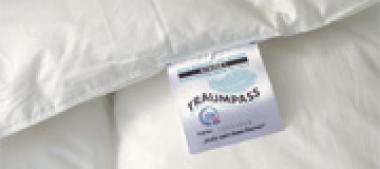What means Downafresh greenLine?
 Only bedding products containing down and feather fillings may be labelled with the Downafresh greenLine brand. Down and feathers are a pure natural material deriving from a sustainable production process. The trademark variation Downafresh greenLine signifies that the fillings of bedding products labelled with this trademark have been processed according to ecological criteria.
Only bedding products containing down and feather fillings may be labelled with the Downafresh greenLine brand. Down and feathers are a pure natural material deriving from a sustainable production process. The trademark variation Downafresh greenLine signifies that the fillings of bedding products labelled with this trademark have been processed according to ecological criteria.
What does that mean?
Down and feathers are a product of nature. Due to their natural properties they have an outstanding heat insulating effect and are perfectly suitable as filling material for bedding products. They keep the sleeping person warm with very little weight. Down and feathers are not produced industrially, but are a pure natural material. They do not contain any harmful substances by nature and can easily be recycled. For bedding products labelled with Downafresh greenLine only fillings are employed which have been thoroughly washed with water and dried at temperatures of at least 100° C in order to meet the hygienic requirements defined in the European standard EN 12935.
During the processing of such feathers and down, only environmentally compatible detergent agents are used preserving the natural properties of the filling material. The users of Downafresh greenLine are obliged to have their products regularly tested at an independent testing laboratory to check whether the requirements for hygiene, cleanliness and environmental friendliness have been met.


















